#slave rebellions
Text
On April 6th in Hoodoo History: The New York City Slave Revolt of 1712 🔥✊🏾
23 enslaved Afrikans set fire to NYC one year after the slave trade markets officially opened by the East River on Wall Street.

• On the night of April 6th, 1712, 23 Afrikans armed themselves with swords, knives, guns - laced with prayer & faith - and fire against White Slavers in the streets of NYC. They set an outhouse ablaze at the home of Peter Van Tilborough on Maiden Lane, at what was then the northern edge of Manhattan. They then picked off any White Slavers nearby who tried to stop it, from the cover of darkness. 9 Slavers were killed and 6 others were injured by nights end.
• On the following morning, the Governor of NY ordered two militias to "drive the island" aka capture & kill the rebels. 6 Afrikans took their lives in protest. The rest were burned alive or "broken" at the wheel. This unprecedented event hitting the streets of NYC quickly spurred the NY State Assembly to pass an act that would permit Slavers to punish Afrikans to the extreme measures by "not extending to life or member", thus cementing a new precedent for their cruelty in the North. In addition, Slavers would now be required to pay $200 dollars in security fees to the State & annuity for any freed Afrikans. Despite these stringent laws, NYC would see more slave rebellions in the next two decades; the next being in 1741.
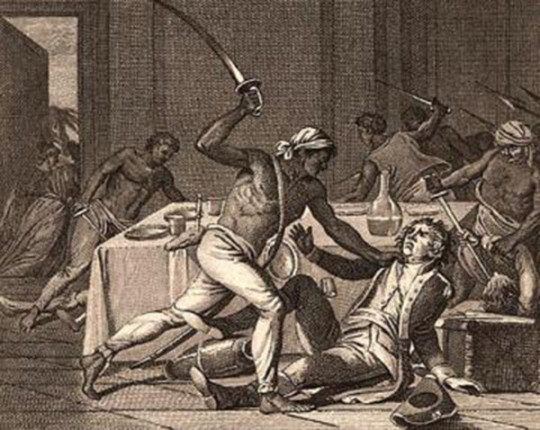
To be of Hoodoo is, and has always been, to fight back. Let this be a reminder, forever to be drilled into our psyches: We been fighting. We been sacrificing. We been spiriting. We been victorious.
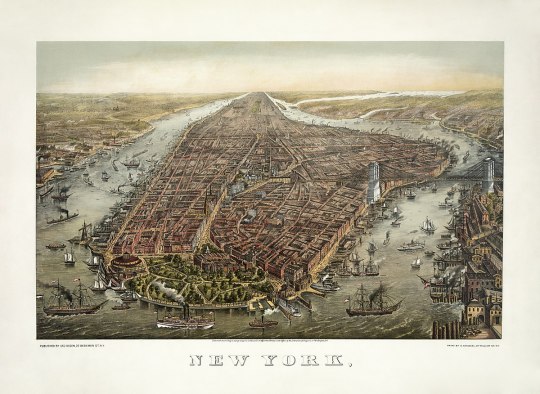
Today, 83 Maiden Lane sits in the infamous Financial District of Manhattan & now serves as the headquarters of the AHRC (Association of Help for Retarded Children). But beneath the cloak of modern amenities & reconstructive efforts, the once-scorched Earth still remembers the night of April 6th. This is where we made our stand. This, & the streets along the northern edge of Manhattan, is a place of power.
It is important to remember the when & WHERE of this event (and those that followed) as many to this day falsely believe that the North was somehow the righteous exception to the Eurocentric cruelties of Maafa. The North was not the exception then & is not the exception now. May we:
• Meditate on the cost of true freedom that these Ancestors paid in blood so we wouldn't have to.
• Pour libations for them, especially those of us residing on or near the Financial District, as this is where our Ancestors were bought & sold from the docks on the East River to Wall Street.
• Remember our plight & presence in the Northern states that have lightened their reputation with the mask of progressive thinking.

#slave rebellions#hoodoo#hoodoos#atr#atrs#the hoodoo calendar#juju#1712#the nyc revolt#the nyc revolt of 1712#nyc revolt of 1712#maafa#libations#ancestor veneration#black history#American history
145 notes
·
View notes
Text
Slavery was originally universal to all the 13 colonies, not just the Southern ones:
One of the major rebellions in the North's colonial era was the one in New York City, in 1712. At the time it was launched Wall Street was the main place of slave auctions in NYC and the institution had a major presence, as it would for decades after until 1799. This is a reality that tends to be hidden, and where noting its existence is one of those elements where the polemic called the 1619 Project *does* do a valuable service in noting how universal the institution actually was.
#lightdancer comments on history#us history#colonial american history#slave rebellions#black resistance#black history month#new york slave revolt of 1712
8 notes
·
View notes
Text
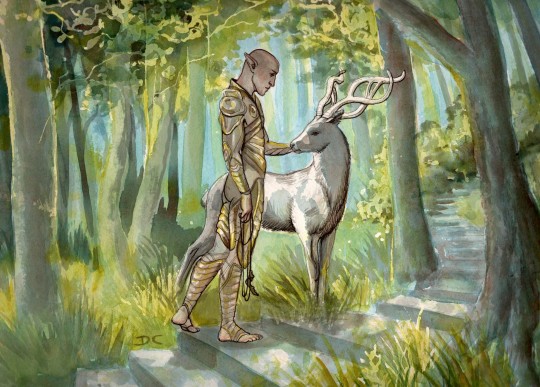
Solas, Arlathan
Long ago, there was a time when Solas admired every new creature of Ghilan'nain, and the Halla were his favorite.
She was the only Evanuris capable of creation instead of destruction.
Acrylic ink and fineliner on bamboo paper.
#solas#solasmance#solas dragon age#solas x ghilan'nain#dragon age inquisition#my fanart#my art#art#dai#dragon age#ghilan'nain#evanuris#the dread wolf rises#ancient solas#solas dread wolf#halla#dragon age fanart#dragon age dreadwolf#yes i know Solas had dramatic hair during his arlathan time#but i imagine this scene after he started to lead the slave rebellion#and so he would already have humbled his apearance#what can i say i like the egg bald#seeing people modd Solas with luscious locks makes me cringe a bit#i like that he's weird looking?#im just saying#give me the egg so bald and shiny i can see my own reflection please#solas fanart#traditional media#traditional illustration#Dazechroma
316 notes
·
View notes
Text

The Death of Spartacus by Hermann Vogel
#spartacus#art#hermann vogel#ancient rome#slave revolt#slave rebellion#history#antiquity#thracian#gladiator#gladiators#roman republic#roman#romans#rebellion#revolt#uprising#europe#european#servile wars#third servile war#italy
159 notes
·
View notes
Text
everytime i rewatch black sails, i find myself like vane more and more ngl. the first season really tries hard to trick you into thinking he’s just unnecessarily, banally, and uncompellingly an asshole (in the overwhelmingly compelling asshole show), whose one redeeming feature is that he’s kinda pathetic too. but geez s2 really nails home everytime that hes the best and the coolest and the most honest (maybe even most compassionate) of the mcs up until this point, barring anne of course. and on top of that i actually kind of think he has the best pre-s3 speeches. like obvs s4 flint is yknow s4 flint. and s3 max is so insane i actually cant handle it. but oh my god charles vane’s letter and his fuck your legitimacy eleanor speech and his hanging speech are so good. and fuck what i said earlier isnt even true. bc his s1 speech while hes looking in the eyes of the little boy he used to be is actually like the bestest. like fuck ok. charles vane is the best actually. #1 anarchist boy. 10/10 would want him in my commune. hed point blank refuse to help with the dishes tho so 😬.
#black sails#charles vane#kaz queuekker#i know other people have said this before#but i always forget how much this dude rocks#his cheesy archetypal veneer#makes him so easy to overlook amongst all the brighter shinier characters#its genuinely such a crime they wasted him on a stupid blackbeard plotline#when we could have had him w/madi in the maroon plotline#or even touched on what they were even trying to so w/the white slave plotline#which makes zero sense to do in a show set in 1715#a whole charles vane lifetime (maybe) after bacon’s rebellion#and the shift away from indentured servitude#(due to concerns over race and class solidarity)#in favor of racialized heavily codified and lifelong inherited slavery#which while again is too early for the showz setting#wouldve at least been thematically relevant#a million times more than a lazy regurgitation#of the mythologizing blackbeard thing#in the deconstructing pirate myths show???#but i digress
137 notes
·
View notes
Text
"The best calumnies are spiced with truth," suggested Qavo, "but the girl's true sin cannot be denied. This arrogant child has taken it upon herself to smash the slave trade, but that traffic was never confined to Slaver's Bay. It was part of the sea of trade that spanned the world, and the dragon queen has clouded the water. Behind the Black Wall, lords of ancient blood sleep poorly, listening as their kitchen slaves sharpen their long knives. Slaves grow our food, clean our streets, teach our young. They guard our walls, row our galleys, fight our battles. And now when they look east, they see this young queen shining from afar, this breaker of chains. The Old Blood cannot suffer that. Poor men hate her too. Even the vilest beggar stands higher than a slave. This dragon queen would rob him of that consolation." (Tyrion VI, ADWD)
Should you reach your queen, give her a message from the slaves of Old Volantis." She touched the faded scar upon her wrinkled cheek, where her tears had been cut away. "Tell her we are waiting. Tell her to come soon." (Tyrion VII, ADWD)
I appreciate how George explicitly makes the point that slavery isn't just about the economic aspect and that it is, at its root, built on subjugation. Even the people who don't directly benefit from it will fight to keep the system in place just so they have someone beneath them. That's why all the criticisms of Dany not replacing the economy before abolishing slavery fall flat, because that wouldn't have worked either. The slavers would've fought to enforce slavery regardless because they enjoyed the power and privilege it granted them. We also get insight onto the slaves thoughts on Dany's revolution, which makes it feel like this perspective is only coming from the consideration of the slavers and not the people actually being subjugated. The slaves want to be free, they want Dany to free them, and that shouldn't have to wait until the people who think of them as property decide it's acceptable.
#daenerys targaryen#pro daenerys targaryen#asoiaf#george rr martin#I just know some of y'all were in history class playing devil's advocate when the teacher was covering slave rebellions#there's no other explanation for why people in this fandom advocate so hard for the slavers and ignore the slaves#slavers: uwu I'm nervous being around my slaves who I think of property cause this new Queen is giving them ideas#and those are the people fandom is choosing to defend 🙄#never mind that she's actually working to rebuild the economy and instead of working with her the slavers are digging their heels in and#fighting to reinstate slavery...but these are the people y'all want Dany to compromise with (knowing you would call her a slaver if she did#/dragons don't plant trees so Dany doesn't know how to rebuild/ and she's literally replanting the trees that the /slavers/ burned sdksdkds
101 notes
·
View notes
Text
I don't care how it has to happen, I don't care if it doesn't make sense, I don't care if it could have major consequences
But someone has to free the slaves of Tatooine.
Make the New Republic attack the fucking planet and kill the slavers.
Make Boba Fett use his power to make the slavers free their slaves
Make someone create a something-sci-fi-remote that enables all the slave chips, and then leads the biggest rebellion Tatooine has ever seen, and kills all the slavers.
SOMEONE HAS TO DO SOMETHING DEAR GOD
#Fuck it I'll had a rebellion in my AU#Luke needs to go back there and at least help some of them#star wars#luke skywalker#tatooine#tatooine slave culture#boba fett
51 notes
·
View notes
Text

Nat Turner: A Rebel's Quest for Freedom and Inspiring Resistance
#nat turner#black power#south hampton vrginia#the birth of a nation#black excellence#slave rebellion#tik tok#black tik tok
144 notes
·
View notes
Text

"The original "Uncle Tom",
Rev. Josiah Henson and wife; Dresden ,Canada (c1907)
Josiah Henson (June 15, 1789 – May 5, 1883) was an author, abolitionist, and minister. Born into slavery in Charles County, Maryland, he escaped to Upper Canada (now Ontario) in 1830, and founded a settlement and laborer's school for other fugitive slaves at Dawn, near Dresden in Kent County. Henson's autobiography, The Life of Josiah Henson, Formerly a Slave, Now an Inhabitant of Canada, as Narrated by Himself (1849), is widely believed to have inspired the character of the fugitive slave, George Harris, in Harriet Beecher Stowe's Uncle Tom's Cabin (1852), who returned to Kentucky for his wife and escaped across the Ohio River, eventually to Canada. Following the success of Stowe's novel, Henson issued an expanded version of his memoir in 1858, Truth Stranger Than Fiction. Father Henson's Story of His Own Life (published Boston: John P. Jewett & Company, 1858). Interest in his life continued, and nearly two decades later, his life story was updated and published as Uncle Tom's Story of His Life: An Autobiography of the Rev. Josiah Henson (1876).
Josiah Henson was born on a farm near Port Tobacco in Charles County, Maryland. When he was a boy, his father was punished for standing up to a slave owner, receiving one hundred lashes and having his right ear nailed to the whipping-post, and then cut off. His father was later sold to someone in Alabama. Following his family's master's death, young Josiah was separated from his mother, brothers, and sisters.His mother pleaded with her new owner Isaac Riley, Riley agreed to buy back Henson so she could at least have her youngest child with her; on condition he would work in the fields. Riley would not regret his decision, for Henson rose in his owners' esteem, and was eventually entrusted as the supervisor of his master's farm, located in Montgomery County, Maryland (in what is now North Bethesda). In 1825, Mr. Riley fell onto economic hardship and was sued by a brother in law. Desperate, he begged Henson (with tears in his eyes) to promise to help him. Duty bound, Henson agreed. Mr. R then told him that he needed to take his 18 slaves to his brother in Kentucky by foot. They arrived in Daviess County Kentucky in the middle of April 1825 at the plantation of Mr. Amos Riley. In September 1828 Henson returned to Maryland in an attempt to buy his freedom from Issac Riley.
He tried to buy his freedom by giving his master $350 which he had saved up, and a note promising a further $100. Originally Henson only needed to pay the extra $100 by note, Mr. Riley however, added an extra zero to the paper and changed the fee to $1000. Cheated of his money, Henson returned to Kentucky and then escaped to Kent County, U.C., in 1830, after learning he might be sold again. There he founded a settlement and laborer's school for other fugitive slaves at Dawn, Upper Canada. Henson crossed into Upper Canada via the Niagara River, with his wife Nancy and their four children. Upper Canada had become a refuge for slaves from the United States after 1793, when Lieutenant-Governor John Graves Simcoe passed "An Act to prevent further introduction of Slaves, and to limit the Term of Contracts for Servitude within this Province". The legislation did not immediately end slavery in the colony, but it did prevent the importation of slaves, meaning that any U.S. slave who set foot in what would eventually become Ontario, was free. By the time Henson arrived, others had already made Upper Canada home, including African Loyalists from the American Revolution, and refugees from the War of 1812.
Henson first worked farms near Fort Erie, then Waterloo, moving with friends to Colchester by 1834 to set up a African settlement on rented land. Through contacts and financial assistance there, he was able to purchase 200 acres (0.81 km2) in Dawn Township, in next-door Kent County, to realize his vision of a self-sufficient community. The Dawn Settlement eventually prospered, reaching a population of 500 at its height, and exporting black walnut lumber to the United States and Britain. Henson purchased an additional 200 acres (0.81 km2) next to the Settlement, where his family lived. Henson also became an active Methodist preacher, and spoke as an abolitionist on routes between Tennessee and Ontario. He also served in the Canadian army as a military officer, having led a African militia unit in the Rebellion of 1837. Though many residents of the Dawn Settlement returned to the United States after slavery was abolished there, Henson and his wife continued to live in Dawn for the rest of their lives. Henson died at the age of 93 in Dresden, on May 5, 1883.
#Josiah Henson#Dresden#uncle tom#original uncle tom#american revolution#dawn township#kent county#methodist#preacher#tennessee#ontario#rebellion#dawn settlement#john graves simcoe#province#slaves#united states of america#united states#war of 1812#african#kemetic dreams#afrakan#africans#brownskin#afrakans#brown skin
67 notes
·
View notes
Note
Wait so you really hate Daenerys for killing slavers ??? Bitch, I thought it was a joke. Wait till you learn what Algerian independantists did to French settlers.
I really do not know who the fuck you think you are talking to because i have never once said that. I think the show condemning Daenerys for killing slavers was one of the worst things they ever did, and i really don’t like the section of the fandom that believes this. It is quick easy and free to simply not defend slavery and it’s super gross when people do in any context. Killing slavers is pretty black-and-white morally justified. I do not really understand the Discourse around whether it’s okay for her to do that. The ambiguity comes from the fact that she does not always successfully move towards liberation, there’s collateral damage, and she sometimes speaks for others when she shouldn’t, but the question of whether ending slavery is a good idea should not at all be up for debate?
I am pretty sure this ask is misdirected or bait because I have talked at length about how my favorite thing about Dany is that she’s a liberator intent on dismantling oppressive systems (some of which her family before her helped build.) She wants to go home, but home never really existed for her, so she has to create a better world!!! She’s makes a lot of mistakes on account of being 15, but she’s trying. It’s an uphill battle because she is trying to uproot the deeply rooted economic and sociocultural system at the core of the enslaver societies in Essos, which would a difficult task even if she was not literally fifteen with terrible advisors and facing active resistance from the enslaver class at every juncture. But it is still worth attempting because ending slavery is a very righteous and morally correct goal.
#accusing me of being a pied-noir and not like. a cracker is interesting context. where are you from?#feel like most americans would use the haitian revolution or one of the domestic slave rebellions as more immediate context#academic curiosity aside. don’t talk to me like that? what’s wrong with you lmao#asoiaf
92 notes
·
View notes
Text







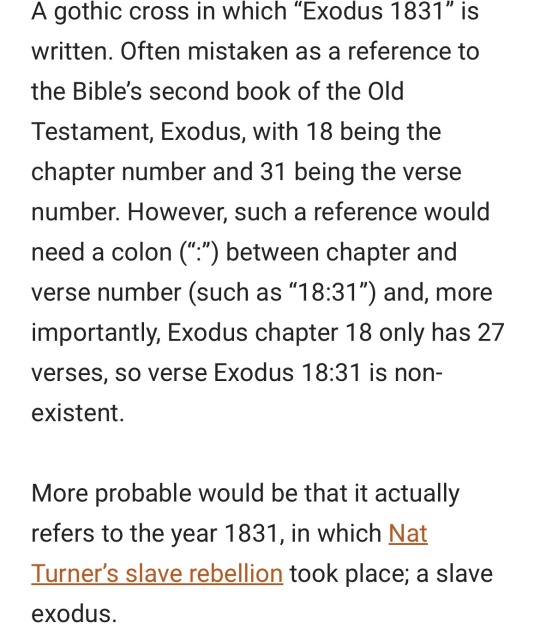
#this week#2019#German coast#uprising#slave rebellion#reenactment#thanks#Nola news#I found that stick#&made the fake baby#most people#had real props#lol
27 notes
·
View notes
Text
Hoodoo Veneration Days in April 2023

The 2023 Hoodoo's Calendar recognizes these Hoodoo Saints & Elevated Ancestors on the following dates in the Month of April:
4/1 Venerable Father Augusts Tolton (B-Day)
Offering Suggestions to Father Augusts: Catholic bible/verse, red wine, & Catholic hymns
4/4 Dr. Maya Angelou (B-Day)
Offering Suggestions to Queen Mother Maya: reading/sharing her literary work, libations of water, & dance (particularly Modern & Calypso)
4/5 Booker T. Washington (B-Day)
Offering Suggestions to Brother Booker T.: dollars/coins, libations of water (especially on the grounds of Tuskegee University), & books
4/6 is the 311th Anniversary of The NYC Revolt
Offerings to the Dead on these hallowed grounds: libations of water, tobacco smoke, & prayers for their elevation
4/20 Chief Obwandiyag aka Pontiac (D-Day)
Offering Suggestions to War Chief Pontiac: tobacco/sweetgrass smoke, libations of water, & Ottawa Nation war drum music
🌟 FINAL copies of The 2023 Hoodoo's Calendar are available for purchase! Subscribe to the official e-newsletter for the latest updates & exclusive content access. https://thehoodoocalendar.square.site 🌟
#ancestors#elevated ancestors#hoodoo saints#ancestor veneration#libations#hoodoo#hudu#hoodoos#veneration days#maya angelou#augustus tolken#booker t washington#the nyc revolt#slave revolts#slave rebellions#chief pontiac#obwandiyag#cheif Obwandiyag#atr#atrs
18 notes
·
View notes
Text
The 1960 Kirk Douglas film of Spartacus was once a staple on our TVs at Christmas. Times have changed, but the story of Spartacus remains a classic.
But remember, history often differs from what's portrayed in popular media.
In this in-depth, two-part article, we peel back the layers of myth to explore who Spartacus truly might have been. Was he a hero, a rebel, a slave, or all of the above? Journey back to 73 BC and uncover the details of his great slave rebellion that shook the foundations of ancient Rome. We delve into the historical texts, exploring the differing accounts of classical authors and the realities of gladiator life, far from the glamour of the silver screen.
From his origins in Thrace, his time as a Roman soldier, to his days at the brutal gladiatorial training school in Capua, Spartacus' story is filled with intrigue, struggle, and strategy. Discover how he rallied his fellow gladiators with kitchen supplies, looted Capua, and escaped to Mount Vesuvius, setting the stage for a rebellion that would become a legend.
Join us as we explore the life and times of Spartacus, understanding his impact on Roman history and the legacy that continues to inspire today.
#Spartacus#GladiatorRebel#AncientRome#HistoricalLegend#revolts#rebellion#gladiators#Romans#uprising#slaves#legend
17 notes
·
View notes
Text
The Battle of ‘Negro Fort’ – Inside America's Forgotten Slave Rebellion - MilitaryHistoryNow.com

A year after the Battle of New Orleans, runaway slaves armed by the British occupied a stockade in Spanish Florida. The so called “Negro Fort” became a mecca for other fugitives from Southern plantations. In 1816, the U.S. Army arrived to crush the settlement. (Image source: WikiCommons)
“The Battle of the ‘Negro Fort,’ marks a critical moment when the federal government took a decisive stance in support of slavery and its expansion.”
By Matt Clavin
THE TIDAL MARSHES of Florida’s Apalachicola River were still under the authority of the Spanish crown in 1816, yet the events that took place there would go on to become a forgotten yet tragic chapter in the long and bloody history of American slavery.
It was during that year that an army of fugitive slaves, armed with foreign weaponry and united by dreams of freedom, would fight and die against a legion of American troops and allied Creek Indians dispatched by a future U.S. president bent on their destruction.
The Battle of the ‘Negro Fort’ marks a critical moment when the federal government took a decisive stance in support of slavery and its expansion.
What would become known as Negro Fort actually sprung from the War of 1812, one of the United States’ most misunderstood conflicts. During the contest’s third and final summer, Britain landed hundreds of troops on Florida’s Gulf Coast in preparation of an invasion of the southern United States.

Still Spanish territories at the time, East Florida and West Florida were neutral in the second war between the American Republic and the United Kingdom. Yet, the uncontested arrival of British troops there suggested the local authorities had ostensibly sided with the redcoats.
Americans’ fears of a Spanish-British alliances only increased when a detachment of Royal Marines erected a sizeable fort on the eastern shore of the Apalachicola River in the Florida Panhandle. Commanders of the new outpost then called upon Native Americans and fugitive African American slaves from across the region to join the British at the fort and together take up arms against the United States. Eventually, more than a thousand Creek, Choctaw, and Seminole Indians, along with several hundred runaways from southern plantations, accepted the invitation.

Following the final ratification of the Treaty of Ghent in the spring of 1815, the British withdrew their forces from Florida. With their powerful allies suddenly gone, most of the Indians gathered at the Apalachicola fort returned to their homes. But the hundreds of fugitive slaves inside the stockade had no place to go and so remained at the abandoned British post. And with the fort’s massive earthworks, wooden palisades and stone buildings at their disposal, along with an arsenal of hundreds of muskets, swords, bayonets and dozens of cannon, the runaways chose to remain there come what may.

Under an informal system of government that can best be described as martial law, this militant black community organized daily for its defence. At the same time, it established important relationships with the neighbouring Choctaws, Creeks, and Seminoles, who provided food and other sustenance in return for weapons and ammunition.
Negro fort was, in a word, formidable.
One British officer who, following the Treaty of Ghent, set out to assist some of the fugitive’s former owners regain their valuable property offered a curt assessment of fort’s inhabitants.
“The blacks are very violent & say they will die to a man rather than return.”
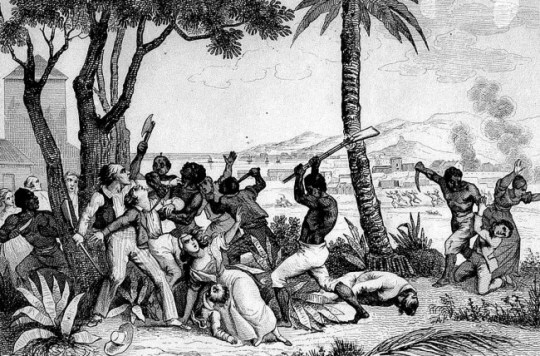
In the coming weeks and months, Hawkins and a number of prominent frontier citizens and officials flooded Washington with reports of rebellious slaves and their savage Indian allies running wild across the southern frontier. The accounts were almost entirely exaggerated.
Although clashes between Indians and settlers on disputed lands throughout the American south were commonplace in the early 19th Century, aside from inspiring an exodus of fugitive slaves from the southern states into Florida, the Negro Fort posed no threat to the United States.
None of this stopped the commander of the United States’ southern army, General Jackson, from taking bold and aggressive action against the settlement.
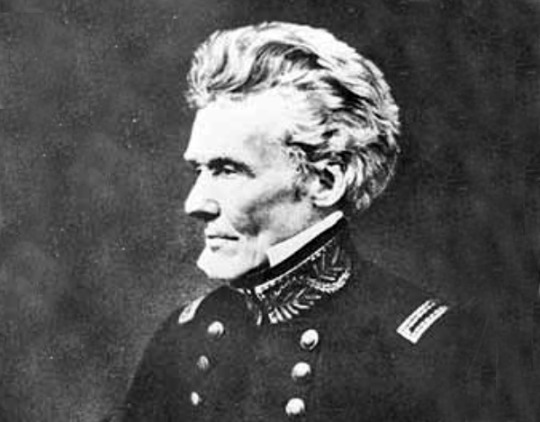
Through a careful and calculating correspondence, Jackson ordered General Edmund Gaines, a hero of the War of 1812, invade Florida with 100 regulars, destroy the fort and return all of its black inhabitants to their American and Spanish owners. To ensure an American victory with as few friendly casualties as possible, Jackson secured the assistance of hundreds of Creek warriors by promising them a cash reward of as much as $50 dollars a head for every black slave returned to captivity.

Over the course of the next two weeks, hundreds of pro-American Creek warriors clashed with black rebels in the dense woods surrounding the fort, which at times descended into bloody hand-to-hand combat.
With American troops watching from a safe distance, the number of casualties went unrecorded—though it must have been considerable.
When a failed sortie by the fort’s defenders was repulsed, an American eyewitness suspected it was only a ruse.
“Many circumstances convinced us,” army doctor Marcus Buck wrote to his father, “that most of them determined never to be taken alive.”
With a pause in the ground fighting, American army and navy vessels on the river exchanged cannonfire with the fort’s defenders for several days.
The bombardment continued to the morning of July 27, when a heated cannonball, or “hotshot,” fired from U.S. Gunboat 154 flew over walls of Negro Fort’s massive inner citadel, landing directly on a gunpowder magazine.

The response of American officials to the destruction of Negro Fort was muted, largely because the entire campaign was illegal. After all, with neither congressional nor executive authority, the United States armed forces had invaded a foreign territory.
By contrast, southern slave owners hailed the battle’s outcome as the dawning of a new day. A Georgia writer expressed this view when reporting “the capture of the Negro and Indian Fort, on Apalachicola.” He explained that because of the efforts of his “brave countrymen,” the southern and western frontiers were now free of the “predatory incursions” posed by black and Indian bandits “whose numbers were daily augmenting; and whose strength and resources presented a fearful aspect to our peaceful borders.”

Within two years of the Battle of Negro Fort, Jackson and the American army again invaded Florida. The resulting First Seminole War would be the first of three wars between the United States and Florida’s black and Indian population who simply refused to submit to their northern American neighbours.
Though Negro Fort survived for only a year, its memory endured in the hearts and minds of hundreds of its inhabitants who had abandoned the outpost prior to its destruction. By fleeing to the Florida peninsula and aligning with the Seminole Indians, most of these former slaves carved out difficult but free lives on the outer edges of the American republic.
As many as one hundred of them were even more fortunate, finding not only freedom but peace and tranquility in the West Indies. By boarding trading vessels and escaping to the Bahama Islands several years after the Battle of Negro Fort, they completed the improbable journey from American slaves to British subjects.
#The Battle of ‘Negro Fort’ – Inside America's Forgotten Slave Rebellion#florida#negro fort#negro abraham#Freedmen#seminole indians#florida enslaved#history of slave settlements in florida
10 notes
·
View notes
Text


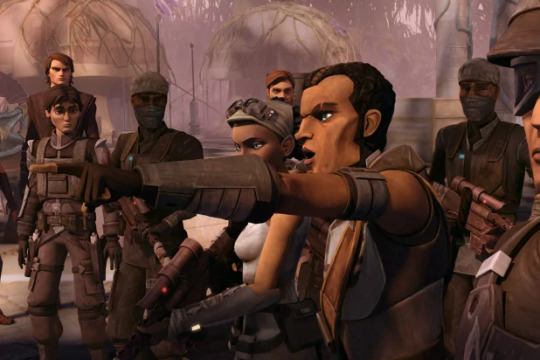
Anakin Skywalker and the ¿Rebellion?
One of my favorite parts of the Clone Wars series is how given the increasing number of problems all over the galaxy as a result of the Clone Wars, there just wasn´t enough Jedi or Clone soldiers to cover them so Anakin´s idea to approach this problem was teaching civilians how to defend themselves and other kind of guerrilla tactics, one of the people who was trained was Saw Guerrera and his group, later he would become one of the biggest leaders in the rebel alliance, who had a big role protecting Galen and Jyn erso which would give the rebellion the plans for the first Death Star.
It´s even better the fact Obi-Wan and the Council called this tactic "terrorism" while Anakin called them "rebels" :)
This gives a new meaning to the fact Vader called the rebellion traitors to the Empire but never terrorists, even if looking at them that way would have gotten the Empire some points in the eyes of the public.
Vader tempted Luke by calling for an end to this "destructive conflict" and put "order in the galaxy" even in the darkside, Vader didn´t deny the rebels had reason to their actions and the Empire was part of the problem even if he didn´t agree with the rebellion.


#anakin skywalker#obi-wan kenobi#ahsoka tano#star wars#The clone wars#Rebellion#Empire#Anakin skywalker unconsciously creating future headaches for the Empire#Palpatine and Vader including#Children#R2D2 C3PO#pocket rebellion leaders#training Ahsoka to survive Order 66 which allowed her to become Fulcrum#is my jam#It´s almost like he said to himself “I am so dissapointed on my self”#I am going to make my darkside life more miserable than usual as a treat and end with a nice send off to Palpatine#I am sure Vader noticed the irony#Anakin to Palpatine: I am going to be so hilarious#you have no idea#This probably was his plan to help free the slaves in the outer rim
31 notes
·
View notes
Text
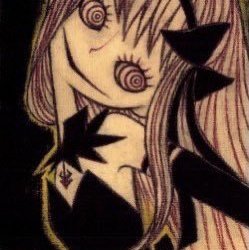



looking at her isn't enough, i need her to be directly injected into my bloodstream
#my deranged insane girl...#idk what homura is gonna do in the 4th movie i shall defend her crimes#youre going to overthrow god rewrite the universe become literal satan and slave an entire life form?? good for you. good for you#SLAY GIRL SLAAAY#pmmm#puella magi madoka magica#madoka magica#madoka magica rebellion#homura akemi#devil homura
56 notes
·
View notes